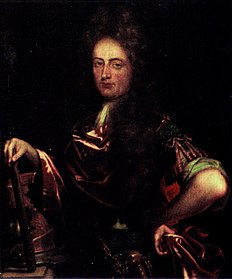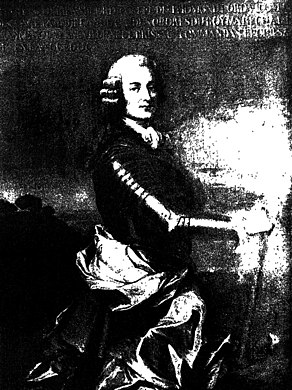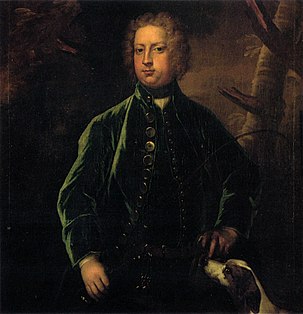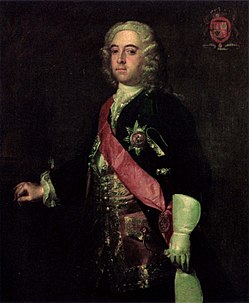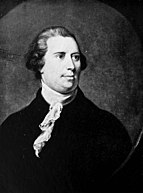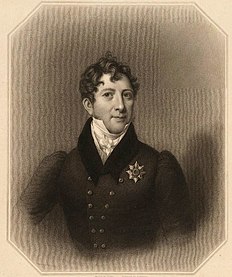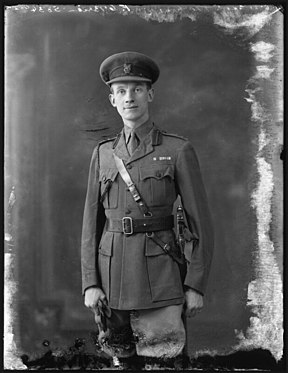
Brian Boru was the High King of Ireland from 1002–1014. He ended the domination of the High Kingship of Ireland by the Uí Néill, and is likely responsible for ending Viking invasions of Ireland. Brian Boru is mentioned in the Annals of Inisfallen and in Chronicon Scotorum as "Brian mac Cennétig". The name Brian of Bóruma or Brian Boru was given to him posthumously Brian built on the achievements of his father, Cennétig mac Lorcain, and especially his elder brother, Mathgamain. Brian first made himself king of Munster, then subjugated Leinster, eventually becoming High King of Ireland. He was the founder of the O'Brien dynasty, and is widely regarded as one of the most successful and unifying monarchs in medieval Ireland.

The Battle of Clontarf took place on 23 April 1014 at Clontarf, near Dublin, on the east coast of Ireland. It pitted an army led by Brian Boru, High King of Ireland, against a Norse-Irish alliance comprising the forces of Sigtrygg Silkbeard, King of Dublin; Máel Mórda mac Murchada, King of Leinster; and a Viking army from abroad led by Sigurd of Orkney and Brodir of Mann. It lasted from sunrise to sunset, and ended in a rout of the Viking and Leinster armies.

Thomond, also known as the Kingdom of Limerick, was a kingdom of Gaelic Ireland, associated geographically with present-day County Clare and County Limerick, as well as parts of County Tipperary around Nenagh and its hinterland. The kingdom represented the core homeland of the Dál gCais people, although there were other Gaels in the area such as the Éile and Eóganachta, and even the Norse of Limerick. It existed from the collapse of the Kingdom of Munster in the 12th century as competition between the Ó Briain and the Mac Cárthaigh led to the schism between Thomond and Desmond. It continued to exist outside of the Anglo-Norman-controlled Lordship of Ireland until the 16th century.
McMahon, also spelt MacMahon, were different Middle Age era Irish clans. Their name is derived from the Gaelic MacMathghamhna meaning 'son of the bear'. According to historian C. Thomas Cairney, the MacMahons were one of the chiefly families of the Dal gCais or Dalcassians who were a tribe of the Erainn who were the second wave of Celts to settle in Ireland between about 500 and 100 BC.
Toirdhealbhach Mór Ua Conchobhair anglicised Turlough Mór O'Conor, was King of Connacht (1106–1156) and High King of Ireland.

The history of Ireland 795–1169 covers the period in the history of Ireland from the first Viking raid to the Norman invasion. The first two centuries of this period are characterised by Viking raids and the subsequent Norse settlements along the coast. Viking ports were established at Dublin, Wexford, Waterford, Cork and Limerick, which became the first large towns in Ireland.

The Dalcassians are a Gaelic Irish clan, generally accepted by contemporary scholarship as being a branch of the Déisi Muman, that became very powerful in Ireland during the 10th century. Their genealogies claimed descent from Tál Cas. Their known ancestors are the subject of The Expulsion of the Déisi tale and one branch of their blood-line went on to rule the petty kingdom of Dyfed in Wales during the 4th century; probably in alliance with the Roman Emperor Magnus Maximus.

Máel Sechnaill mac Domnaill, also called Máel Sechnaill Mór or Máel Sechnaill II, was a King of Mide and High King of Ireland. His great victory at the Battle of Tara against Olaf Cuaran in 980 resulted in Gaelic Irish control of the Kingdom of Dublin.

Cennétig mac Lorcáin, was a prominent king of the Dál gCais and king of Tuadmumu. He raised the dynasty in power, from regional vassals of the kings of Munster, to challenging for the kingship himself. He was the father of Brian Boru, who would continue Cennétig's war-like rise to power, by becoming High King of Ireland in 1002.

Mathgamain mac Cennétig was King of Munster from around 970 to his death in 976. He was the elder brother of Brian Bóruma.
Cellachán mac Buadacháin, called Cellachán Caisil, was King of Munster.

The Kingdom of Munster was a kingdom of Gaelic Ireland which existed in the south-west of the island from at least the 1st century BC until 1118. According to traditional Irish history found in the Annals of the Four Masters, the kingdom originated as the territory of the Clanna Dedad, an Érainn tribe of Irish Gaels. Some of the early kings were prominent in the Red Branch Cycle such as Cú Roí and Conaire Mór. For a few centuries they were competitors for the High Kingship of Ireland, but ultimately lost out to the Connachta, descendants of Conn Cétchathach. The kingdom had different borders and internal divisions at different times during its history.

Donnchadh mac Briain, son of Brian Bóruma and Gormflaith ingen Murchada, was King of Munster.
Events from the 10th century in Ireland.
Events from the 11th century in Ireland.
Domnall Mór Ua Briain, or Domnall Mór mac Toirrdelbaig Uí Briain, was King of Thomond in Ireland from 1168 to 1194 and a claimant to the title King of Munster. He was also styled King of Limerick, a title belonging to the O'Brien dynasty since Brian Boru's sacking of the Hiberno-Norse city state after the Battle of Sulcoit in the 10th century.
The Uí Fidgenti, Fidgeinti, Fidgheinte, Fidugeinte, Fidgente, or Fidgeinte were an early kingdom of northern Munster in Ireland, situated mostly in modern County Limerick, but extending into County Clare and County Tipperary, and possibly even County Kerry and County Cork, at maximum extents, which varied over time. They flourished from about 377 AD to 977, although they continued to devolve for another three hundred years. They have been given various origins among both the early or proto-Eóganachta and among the Dáirine by different scholars working in a number of traditions, with no agreement ever reached or appearing reachable.

The O'Kennedy family, sometimes Kennedy, were an Irish royal dynasty, a sept of the Dál gCais, founded in the Middle Ages who were Kings of Ormond. Their founder was the nephew of High King Brian Boru (1002–1014). The name Cinnéide belonged to Brian Boru's father Cennétig mac Lorcáin, King of Thomond, in the tenth century AD.. The Kennedys did not descend directly from Brian Boru, but from Cinnéide's eldest son Donncuan. Donncuan's son Mahon was the first to call himself Ó Cinnéide which is Irish for grandson of Cinnéide.

Ivar of Waterford was the Norse king of Waterford from at least 969 until his death in the year 1000, and also reigned as King of Dublin, possibly from 989 to 993, and certainly again for less than a year between 994 and 995, returning after his expulsion from the city in 993 by Sigtrygg Silkbeard, who would expel him for good the next time.














